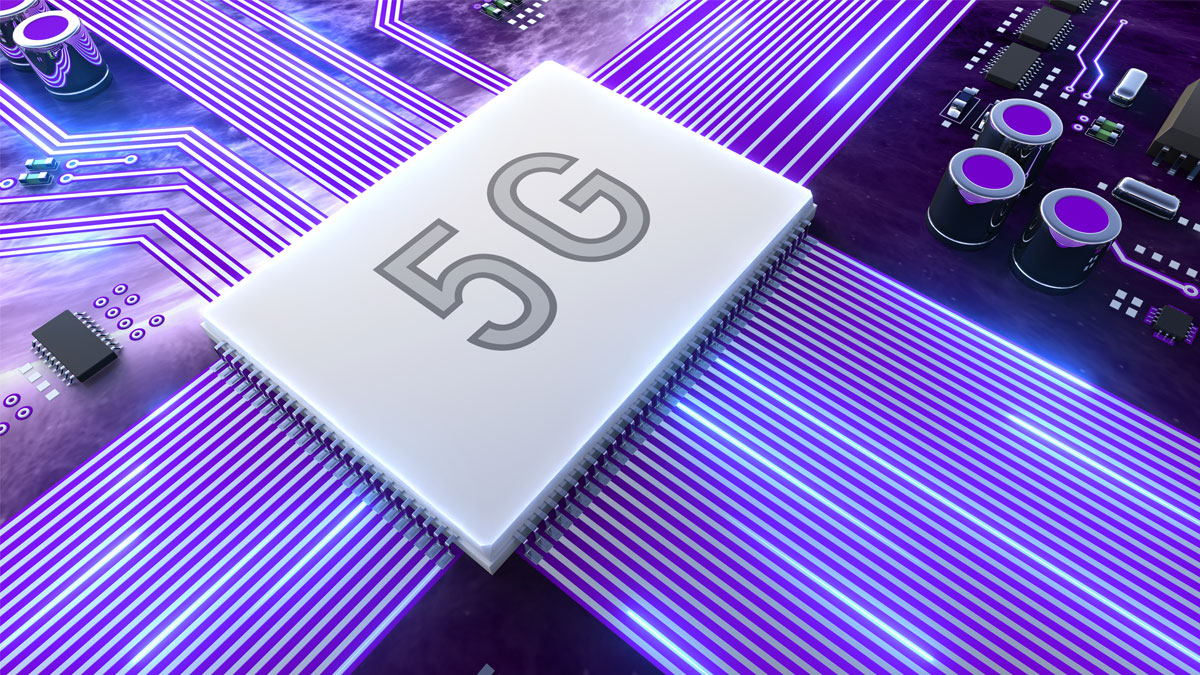
In a recent Constellations article, we explored the current state of the direct-to-device (D2D) connectivity race and examined the regulatory and standards challenges that must be overcome to deploy D2D capabilities en masse.
According to Duncan Stewart, Director of Research at Deloitte, D2D connectivity – though a small market today – will eventually become a critical component of heterogeneous networks. “People who think about the future of telecom in 2030 – and beyond – believe that satellite will be a part of communications networks to handsets,” said Stewart. “Having a space-based network that communicates directly to devices will become the new standard.”
But there is one technological component that still needs to be fleshed out for D2D capabilities to become the new normal for smartphones and other mobile devices: the D2D chipset. “The main chipset that is required for D2D is a radio capable of receiving signals from the satellites directly,” explained Sam Barker, Vice President of Telecoms Market Research at Juniper Research.
Currently, there are two primary types of 5G non-terrestrial network (NTN) chips that industry is turning to for D2D capabilities: the IoT-NTN chip and the NR-NTN chip.
According to a recent news article published by semiconductor manufacturer, Qualcomm, “5G NR-NTN is designed to complement terrestrial networks with non-terrestrial coverage in under-served areas…5G IoT-NTN is designed to expand the addressable market for massive IoT with non-terrestrial coverage.”
D2D Chipset Use Cases
The use cases and applications for D2D chipsets are growing and will continue to proliferate as more chips are manufactured and become available. “There would be special chips for handsets and there would be special chips for satellites to support direct-to-device communication,” said Stewart. “And there’s also a category of D2D chips to enable IoT applications. For example, if there was an oil well on Alaska’s North Slope where there were no fiber optic, telecommunications, or cellular connectivity, one could install an IoT chip on the oil well that could communicate directly to a satellite.”
“For broadband applications, you can take the broadband version of 5G and place it into a chip that you put into a satellite terminal,” said Stuart Daughtridge, Vice President of Advanced Technology at Kratos. “From there, you could then do 5G over a GEO, MEO or LEO satellite.”
Chip Design
The process of installing D2D-enabled chipsets into ground devices like smartphones will require a shift in the architectural design within the devices themselves. Smartphones have a finite, compact amount of space to contain all of their functional components. Instead of installing a single, dedicated chip for D2D capabilities, the chip industry is working towards altering the chips already installed in smartphones to accommodate D2D services.
“Generally, the architectural approach is not to make a special chip that is purely 100 percent dedicated to handling D2D technologies,” said Stewart. “There is a piece of silicon that enables a phone to talk to a satellite that can be added to a part of that system’s chipset. That silicon will create a variant of the existing chip that will enable D2D. Ninety-nine to 97 percent of that chip is exactly the same as the chip that goes into other smartphones. There’s just a little portion of the silicon that needs to be designed and altered to talk to a satellite.”

Signal Compatibility and Antenna Considerations
For ground devices to be able to receive satellite signals, certain compatibility requirements and standards must first be in place. “It works by implementing radios that adhere to standards,” said Barker. “Therefore, a device manufacturer can implement a specific radio and ensure their device has the hardware capable of receiving satellite signal.”
And the standard that must be followed lies in 5G. “The signal compatibility with these chips all comes down to following compliance to 5G,” explained Daughtridge. “5G is really good about ensuring interoperability. Once you’re 5G compliant, you will absolutely be able to work with these chips - which is the key thing.”
Alterations in ground device antennas will also be necessary to accommodate D2D services. “D2D needs antenna too,” said Stewart. “You sometimes actually need to physically change the antennas on a phone so that they work at the right frequencies that the satellite would be using.”
To successfully collect signals and process data on devices supporting D2D, leveraging satellites in lower orbits will be key. “Satellite dishes are used to collect signals with a large wavelength and lower frequency,” explained Barker. “They are needed to be larger to collect this data - the trade off is that it cannot process large amounts of data. Conversely, D2D signals come from [very low Earth orbit (VLEO)] satellites and have higher frequencies and shorter wavelengths - similar to terrestrial networks. This supports data connections and allows for smaller radios.”
The Manufacturing Challenge
According to Stewart, D2D adoption is still in its infancy. “We are at stage one or maybe two,” said Stewart. “It’s in a super early stage. Nobody has deployed it at a massive scale at this point.”
5G NTN chipsets are poised to transform the economics of the Satcom industry, but one reason why they have not been deployed at a massive scale is due to the manufacturing challenges that still remain.
“D2D chipsets could take the cost of a terminal down by an order of magnitude,” said Daughtridge. “The Satcom players are actively looking for chip manufacturers who would be interested in the number of chips that they would want to buy. However, the major chip manufacturers may not even consider doing a production run for Satcom due to its smaller size and scale compared to the cell phone industry. Satellite providers will need to find the right chip manufacturers who will deal with the level of scale that they deal with.”
Explore More:
Podcast: Game Changers Series – Direct-to-Device with AST SpaceMobile
The State of the D2D Race – Progress That’s Been Made, Challenges That Remain
Why a New Satellite Industry Alliance Is Pushing D2D in L- and S-Band
